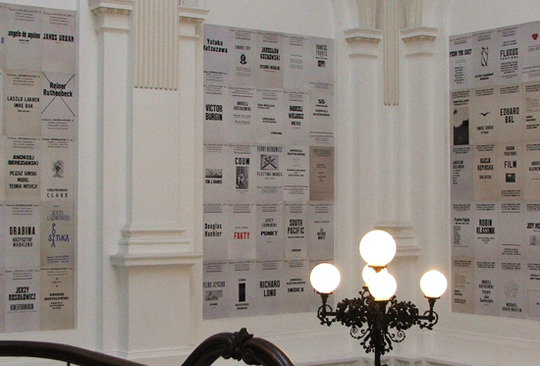Beyond Corrupted Eye. Akumulatory 2 Gallery, 1972 – 1990
Zacheta Gallery, Warsaw
This exhibition is an attempt to present the history of a gallery that for eighteen years of its operations remained a non-commercial space for presenting the work of artists from all over the world. The exhibitions and discussions initiated there and a critical discourse pursued in both theory and practice situate it among the most significant actors on the then map of artistic geography. Functioning in defiance of geopolitical divisions, the Akumulatory 2 Gallery was a place where the public was able to become familiar with art from the East and West, with artists from Eastern and Western Europe, the United States and Canada, from South America and Asia.
The gallery’s origins date back to the NET idea, formulated in 1971 by Jarosław Kozłowski and Andrzej Kostołowski, and a subsequent manifesto mailed to some three hundred and fifty artists and art critics in Poland and internationally, inviting collaboration and a free exchange of artistic facts. Despite official reprisals, the idea of an anti-institutional, non-controllable NET was continued and developed at the Akumulatory 2 Gallery in Poznań, founded by Kozłowski in 1972. Functioning until 1990, the gallery was a space where various artistic ideas and philosophies intersected, where various forms and modes of art’s functioning were presented and discussed. The gallery showed artists associated with conceptual art, minimal art, land art, mail art, concrete poetry, Fluxus, as well practices combining the visual arts with music.
From 1972 to 1990 the Akumulatory 2 Gallery presented a total of one hundred and ninety five events, from exhibitions, through performances, actions and music projects, to lectures. The gallery functioned as a quasi-institution, lacking institutional support and often changing venues. Run, and largely financed, by Jarosław Kozłowski, it was a space that was put at the disposal of the invited artists without obliging them to adhere to any predefined agenda.
The documentary material presented at the Zachęta and in the accompanying publication offers an insight into artistic practices pursued outside the official, entrenched art system, beyond the axes of the centre/periphery divisions, into a vast area of artistic strategies developed at a small, alternative gallery collaborating with artists from all over the world despite functioning in the oppressive conditions of a communist state.
The titular ‘incorruptible eye’ refers to both vision and visibility. On the one hand, to vision that refuses to surrender to ideological pressures and commercial temptations and, on the other, to a blurring of distinctions between the visible and that which is expelled from the field of vision. Visibility resisting aesthetic or political preferences is but one way of reading the history of the Akumulatory 2. The documentation collected in the exhibition and catalogue, largely published for the first time, will facilitate, I hope, a much more comprehensive reading of this history.
Bożena Czubak
